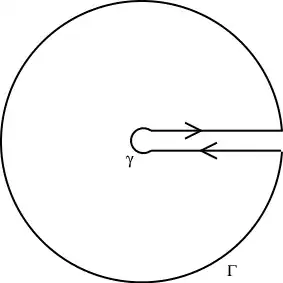If you stick to the complex-analytic technique, here is one possible solution: Choose the branch cut of complex logarithm as $[0, \infty)$ so that $\Im\log z \in [0, 2\pi)$. Then consider the function
$$ f(z) = \frac{\log^2 z}{z^2 + a^2}, $$
where $\log^2 z = (\log z)^2$ is the square of the logarithm. Then using the keyhole contour $C$ described as in Figure 1,
$\hskip{2in}$ 
$\hskip{1in}$ Figure 1. Image from @Daniel Fischer♦'s answer in this posting.
we find that
\begin{align*}
\oint_{C} f(z) \, \mathrm{d}z
&= 2\pi i \left( \underset{z=ia}{\operatorname{Res}} f(z) + \underset{z=-ia}{\operatorname{Res}} f(z) \right) \\
&= \frac{\pi}{a} \left( \left(\log a + \frac{i\pi}{2} \right)^2 - \left(\log a + \frac{3i\pi}{2} \right)^2 \right) \\
&= \frac{2\pi^3}{a} - \frac{2\pi^2 i \log a}{a}. \tag{1}
\end{align*}
On the other hand, shrinking the inner circle $\gamma$ to the origin and letting the outer circle $\Gamma$ to the infinity, it follows that
$$ \oint_{C} f(z) \, \mathrm{d}z \xrightarrow[\substack{\gamma \to 0 \\ \Gamma \to \infty}]{} \int_{0}^{\infty} \frac{\log^2 x}{x^2 + a^2} \, \mathrm{d}x - \int_{0}^{\infty} \frac{(\log x + 2\pi i)^2}{x^2 + a^2} \, \mathrm{d}x. \tag{2} $$
Comparing imaginary parts of $\text{(1)}$ and $\text{(2)}$, it follows that
$$ \int_{0}^{\infty} \frac{\log x}{x^2 + a^2} \, \mathrm{d}x = \frac{\pi \log a}{2a}. $$
